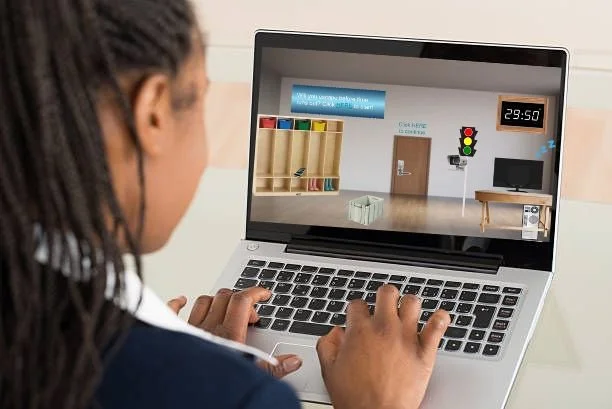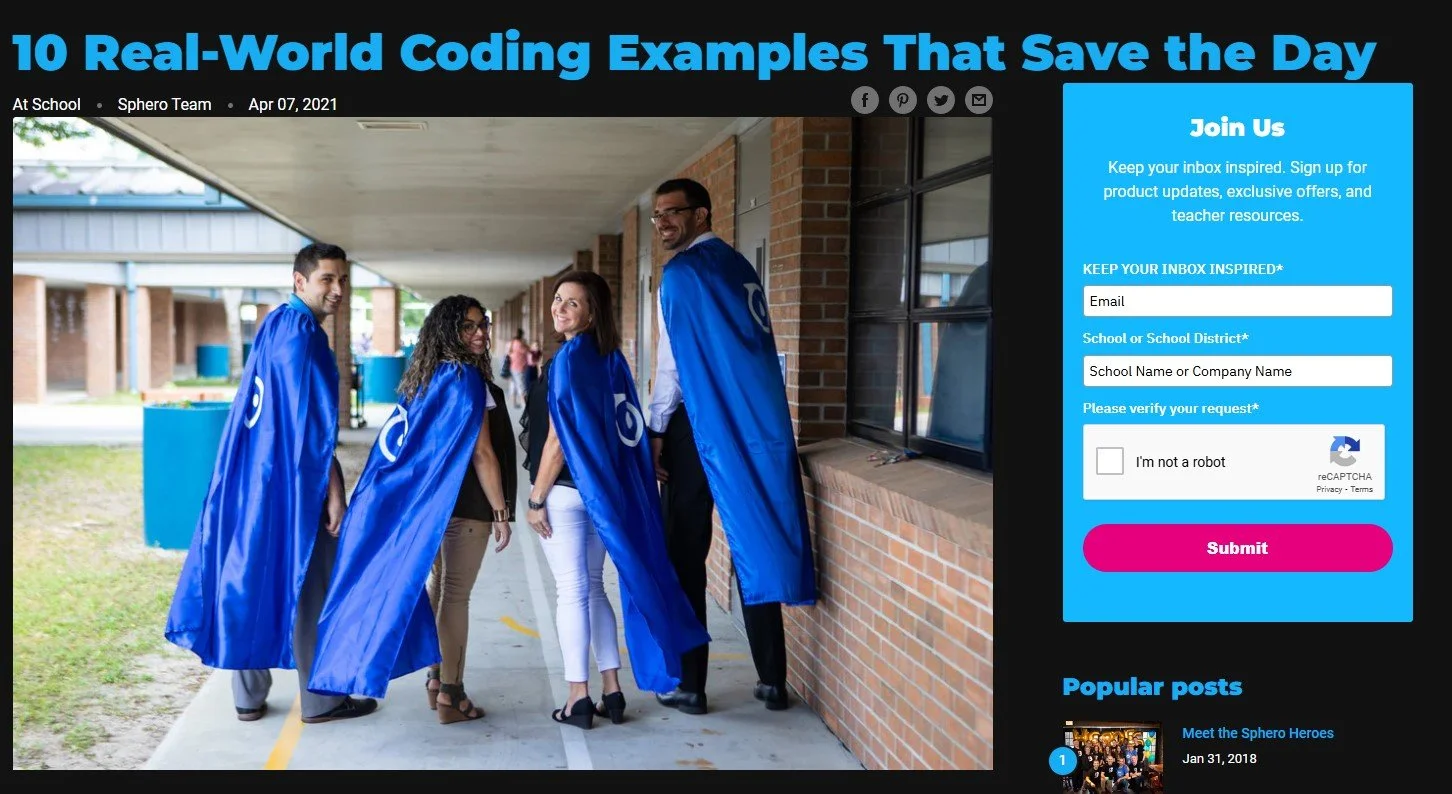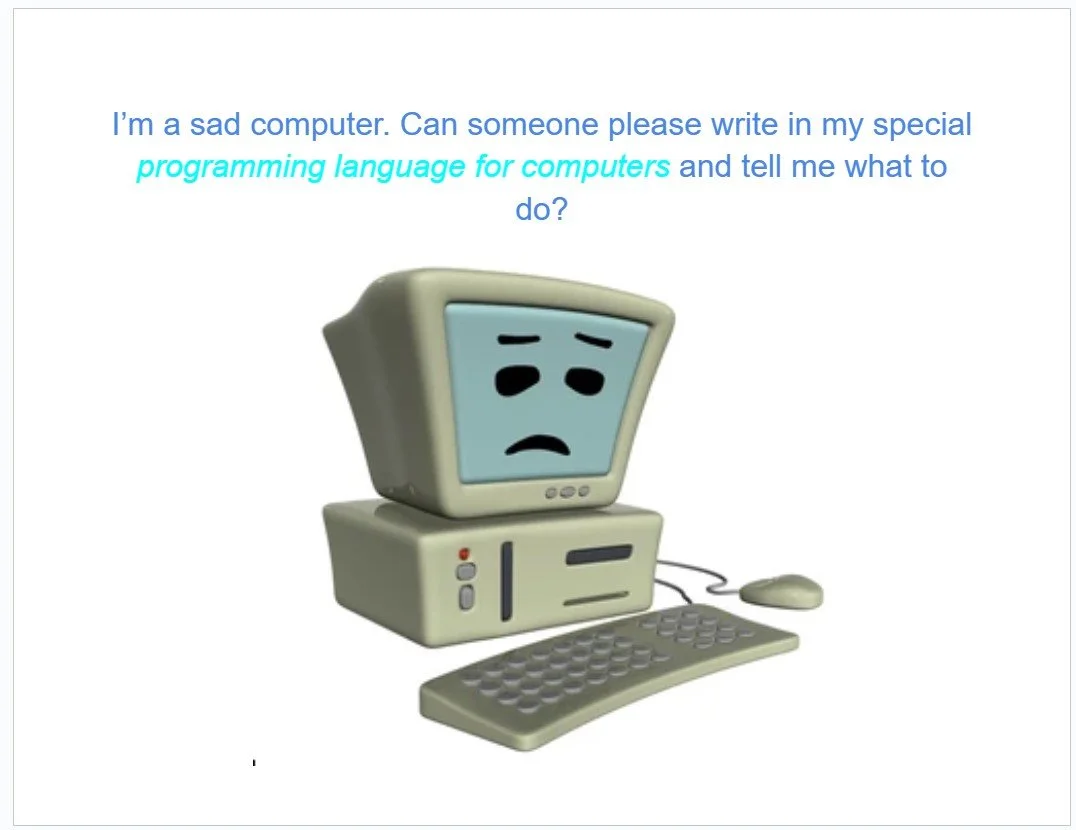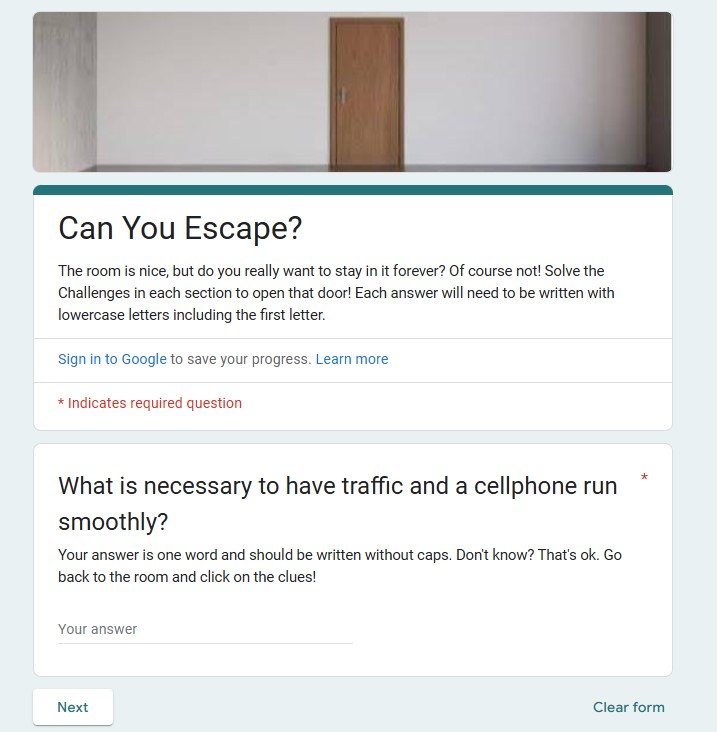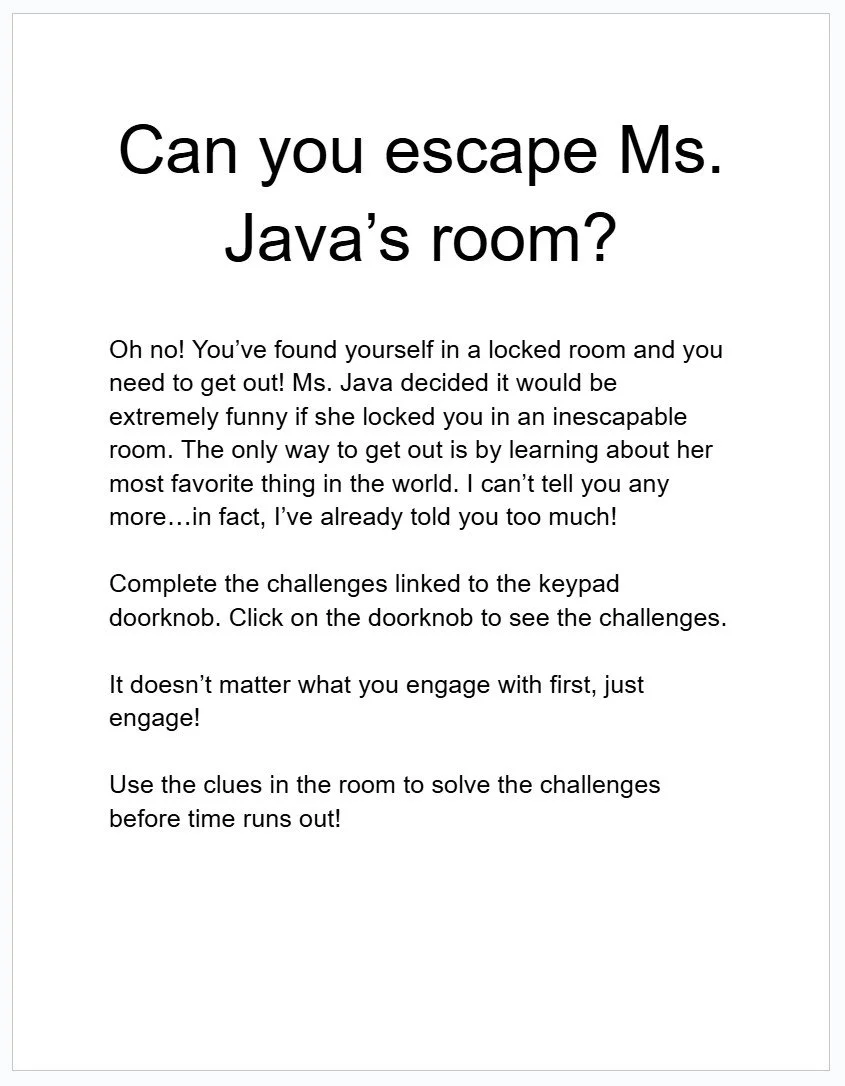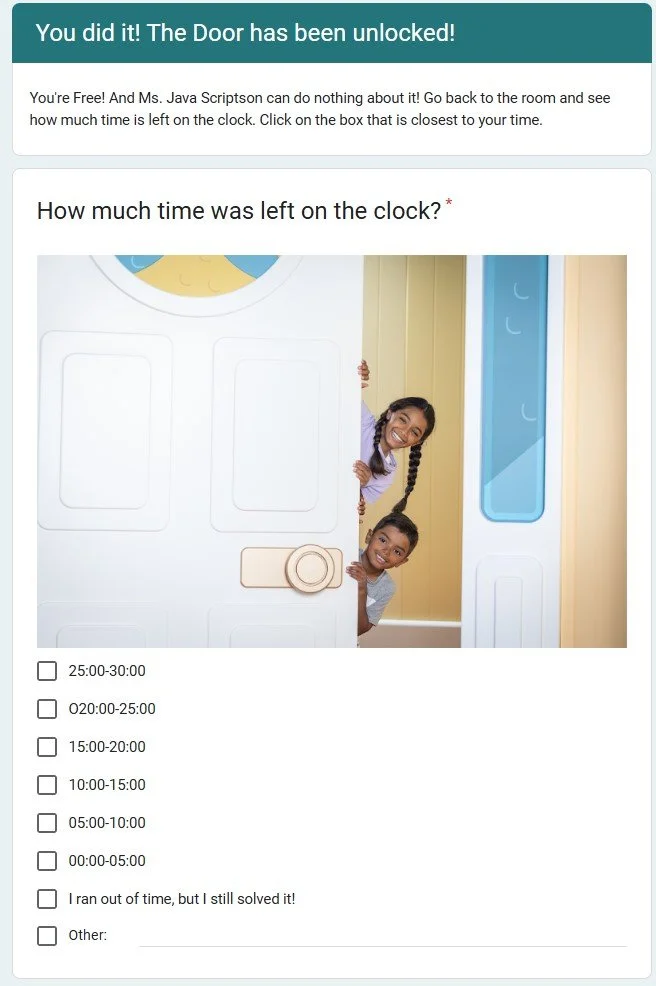Game-Based Learning
Digital Escape Room
Can you learn the necessary coding concepts to escape?
Overview
Audience:
2nd-grade students learning programming and coding.
Responsibilities:
· Instructional Design
· eLearning Development
· Gamified Design
· Game-based Learning design
· Visual Design
· Prototype Creation
Tools Used:
· Google Slides
· Google Forums
· Google Docs
· Multimodal Learning
The Problem
A private school sought a creative and engaging way to teach 2nd-grade students foundational coding concepts. Although expensive instructional coding software had been purchased, the private school noticed that students would disengage due to a lack of introduction to coding and programming.
This lack of introduction or educational scaffolding led to students being disengaged, misinformed, and confused. Students did not find a need to engage with programming software due to not understanding the purpose of coding.
The Solution
I proposed using gamification and game-based learning to introduce the concept and purpose of coding. Via a game-based learning digital escape room, students would be able to learn what coding is, why people code, and use problem-solving and critical thinking skills as they learn.
I also proposed that students work in groups of two interacting with many different objects in a digital room that when clicked would lead to direct and indirect clues. These clues would lead to the students solving the coding riddle and unlocking the room.
The Process
I began the process by working with the Subject Matter Expert (SME) who, in this regard, was the private school’s computer and programming instructor. The SME and I discussed a few foundational terms and concepts the students should learn or know when engaging with the instructional coding software. We both agreed that introducing students to the term and concepts of “variables” and real-world coding would be the most beneficial way to introduce concepts and intrigue students.
I then determined a learner experience objective using the theory and terminology of Bloom’s Taxonomy. After solidifying the learner’s objective, I designed the text-based storyboard. Following approval from the SME on the text-based storyboard, I designed the visual mockups. For the visual mockups, I used a mood board and an initial style guide.
Bloom’s Taxonomy Text-Based Storyboard
Visual Mockups/Mood Board
The Learning Objectives
I designed three challenges for the students that highlighted what coding is, why people code, and coding variables. These challenges use learner autonomy and multimodal devices to engage, motivate, and entertain the students. Once the student is engaged, motivated, and entertained, the learning experience develops into a long-term cognitive experience instead of just a short-term cognitive experience.
I then created an interactive prototype. After incorporating the feedback from the SME, I developed the project using Google Slides, Google Forums, Google Docs, and other multimodal devices.
Interactive Prototype
Full Development
Results and Takeaways
The students’ understanding of coding and participation with the new coding software has improved.
This project uses gamification to improve student engagement, motivation, and learning outcomes.
Throughout the process, Chi has taken very complex ideologies and smoothly blended them with engaging and informative gameplay.


